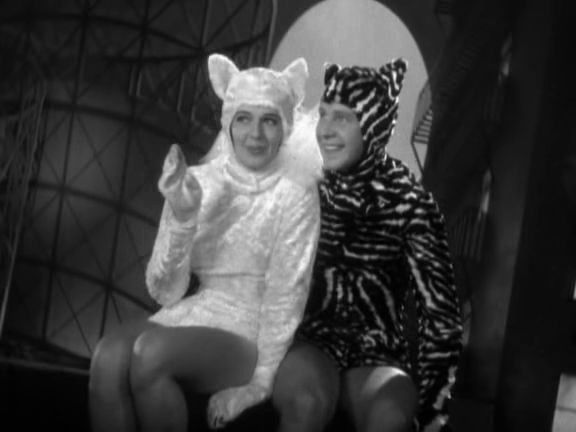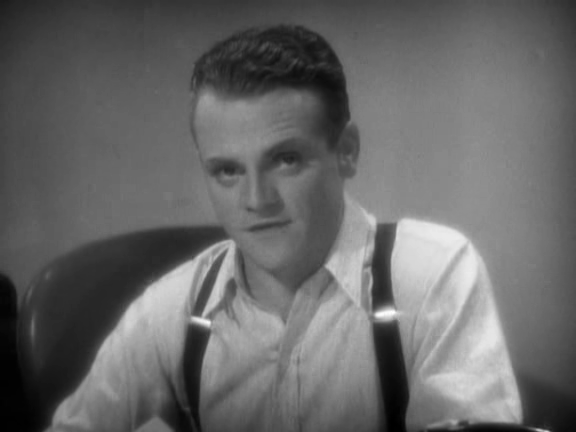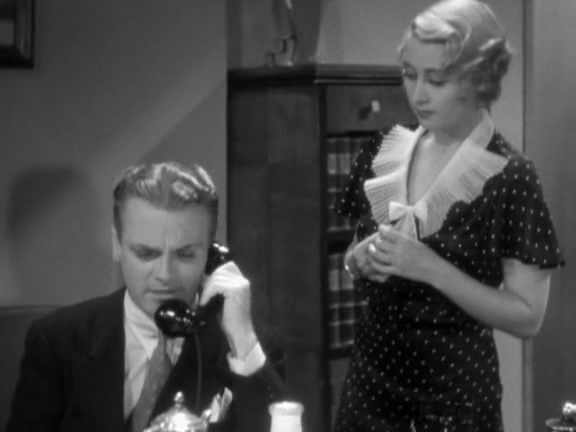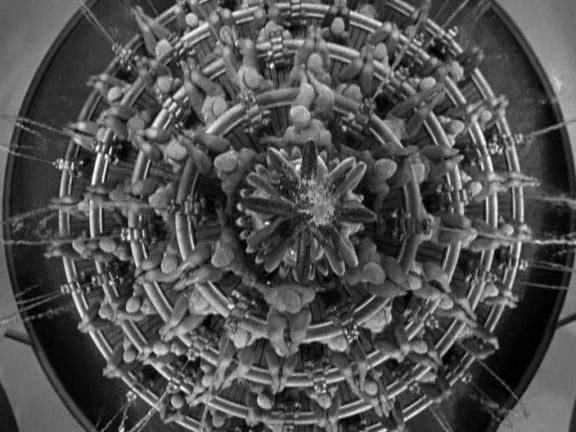Footlight Parade (1933)
“Aw, talking pictures — it’s just a fad.”
|
Synopsis: |
|
Genres, Themes, Actors, and Directors:
Response to Peary’s Review: Peary argues that while the movie is “great fun”, it “would be [a] touch better if [the] screenwriters had simply put in a few lines about how the success of the… numbers is as important to the welfare of the dancers and singers (who need jobs!) as it is to Cagney’s peace of mind” — a point which doesn’t bother me personally, given that Warner Brothers’ other two musicals released the same year (42nd Street and Gold Diggers of 1933) both did an admirable job covering that sociological base. Peary goes on to write that “with the plot out of the way, Busby Berkeley stages three of his greatest, most innovative, and sexiest musical numbers, back to back: ‘Honeymoon Hotel’, ‘By a Waterfall’ (with the chorines, shot from above, creating amazing patterns in the water), and ‘Shanghai Lil’.” Indeed, it’s Berkeley’s concluding masterpieces that constitute the film’s primary calling card — but the storyline itself remains a fun (if occasionally convoluted) backstage drama about an interesting historical topic (trailers have long since replaced live prologues), and it features fine performances by all involved. Redeeming Qualities and Moments:
Must See? Categories
(Listed in 1001 Movies You Must See Before You Die) Links: |








One thought on “Footlight Parade (1933)”
A once-must, for its place in musical cinema history.
Arguably Berkeley’s best dance musical – mainly because, unlike some other films in the Berkeley series, we do not have to wait until the film’s concluding section to get to the good stuff.
Working with an economic line of brief, just-get-the-basic-info-out scenes (with some memorably snappy dailogue: i.e., “As long as there are sidewalks, *you’ve* got a job!”), director Lloyd Bacon has encouraged rapid-fire delivery, which also keeps the fluff stuff hopping.
‘FP’ benefits greatly from Cagney and Blondell’s charisma and chemistry. (Donnelly is also a nice addition for subtle comic relief.)
It’s a minor miracle that the somewhat-sappy songs are made more palatable by way of how they are staged. (Indeed…’By A Waterfall’ is, to put it mildly, a kaleidoscopic wonder and worth the film-view alone.)
Powell is around for his typical boy-next-door thing but putting Keeler in glasses gives her a Howard Hawks-like touch that manages to make her more appealing here. (As well, she and Cagney do nicely together with their bar-counter dance routine in ‘Shanghai Lil’.)
All told, it’s a diverting bonbon but it plays well and ffs should make sure to see representation of the Berkeley style.